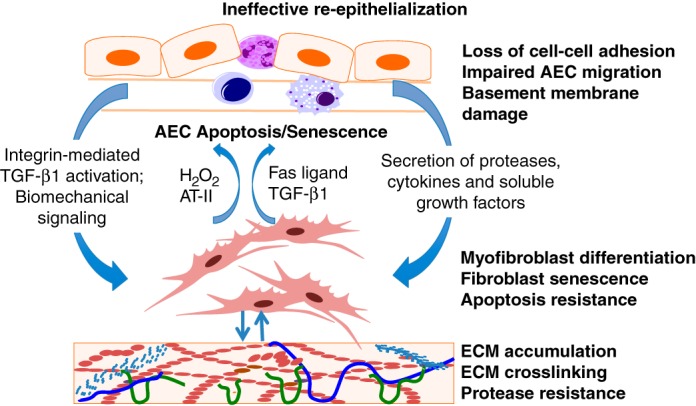Fig. 3.

Epithelial-mesenchymal cross talk in pulmonary fibrosis: Cellular homeostasis of the alveolar structure is dependent on bidirectional signaling between alveolar epithelial cells (AECs) and mesenchymal cells. Loss of homeostasis and ineffective reepithelialization may occur with loss of cell-cell adhesion, impaired AEC migration, senescence, and/or apoptosis. The resultant epithelial disintegrity leads to integrin-mediated activation of transforming growth factor-β1 (TGF-β1), altered biomechanics, and release of proteases, cytokines, and growth factors from the epithelium that activate the underlying mesenchyme. In turn, activated fibroblasts and myofibroblasts that acquire an apoptosis-resistant phenotype secrete a number of soluble factors that can induce apoptosis/senescence of AECs; these soluble factors include TGF-β1, hydrogen peroxide (H2O2), angiotensin-II (AT-II), and Fas ligand, thus perpetuating the injury-repair cycle leading to extracellular matrix (ECM) modification and accumulation.
